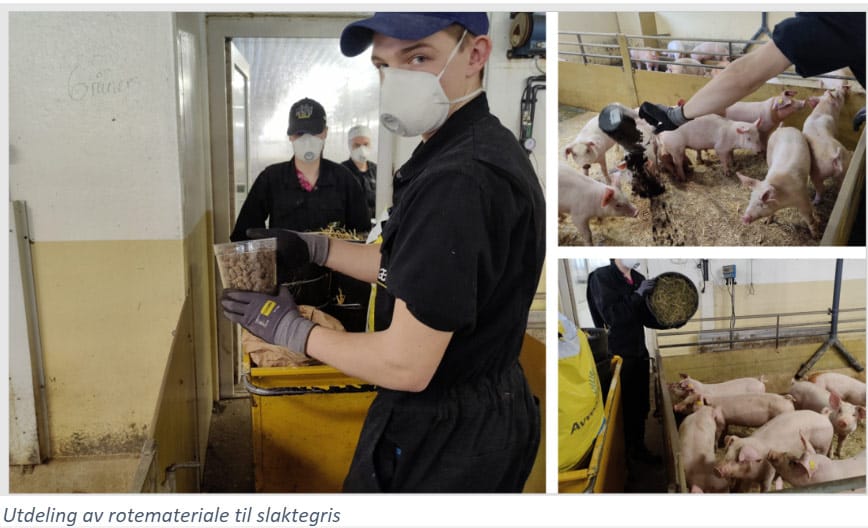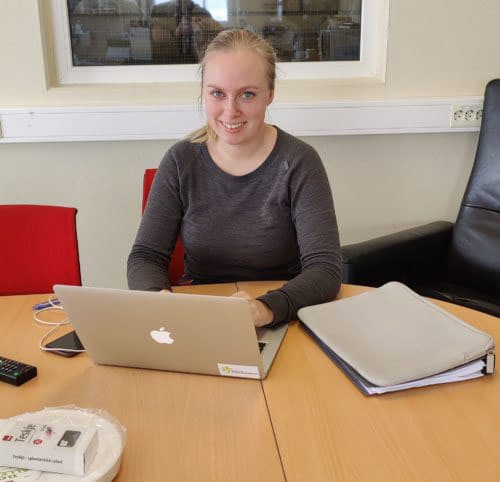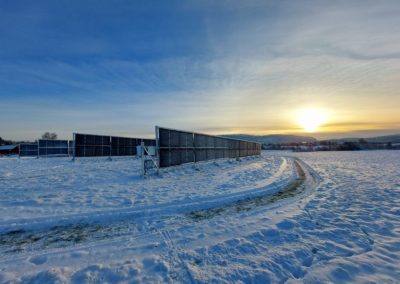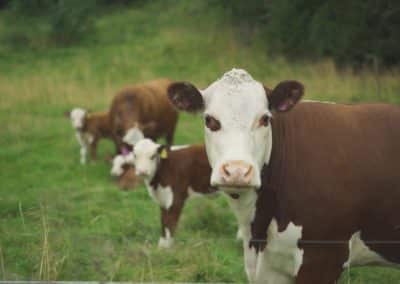The trial is part of the research project "Griseløftet" which is funded by the Research funds for agriculture and the food industry. Nortura is the project manager for the research project, while NMBU is the responsible R&D partner, Felleskjøpet, Fjøssystemer and Norsvin are also involved in the project. The aim of the project is to achieve even better animal welfare in Norwegian slaughter pigs.
In this experiment, Mære Landbruksskole has provided facilities and personnel for practical implementation. Among other things, all the pigs were filmed 4 hours a week using fixed video equipment. This was done to record behavior in connection with the distribution of root materials and took place over a period of 20 weeks. The recordings are used as a data base in the research project, a master's degree was also written in connection with the experiment.

Both fattening pig departments were in use during the experiment, a total of 36 pens with 10 pigs per pen. These were divided into six groups that received different treatments. The treatments were control, hay, pellets (environmental feed), straw, peat and rotating (straw, peat, hay and pellets rotated for four weeks). The groups were allocated rotting materials twice a day and the control group was allocated extra sawdust at the same time as the other groups were allocated rotting materials. Positive behaviors (exploration and play), negative behaviors (aggression, tail biting and ear biting) and tail positions (curled tail, wagging tail and tail hanging down) were recorded. The behaviors were recorded using scan-sampling and direct behavioral observations.
Results from master's thesis

Anna Kristine Dangstorp wrote her master's thesis as part of the project, she found that the rotating group together with the straw group were the only groups that had significantly the highest values for all the positive behaviors and significantly the lowest values for all the negative behaviors. The high group and the turf group had high values for exploration, but also high values for aggression. This indicates that hay and peat are attractive root materials, but increase the incidence of aggression in the pen. The control group and the pellet group had a low incidence of exploration and wagging tails and a high incidence of aggression and ear biting. The straw group and the rotating group had a low incidence of wounds on the ears, tail and body, while the pellet group had a high incidence of bite injuries on the ears, tail and body. Bite damage to ears decreased throughout the trial weeks, as did aggression and ear biting. It was concluded that straw and rotary treatment in total led to the highest welfare and that the environmental feed in total led to the lowest welfare. Watch the video where Anna presents the task.




